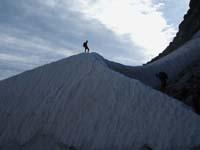Aragonese glaciers, from white to black
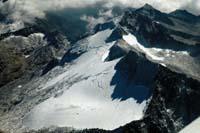
Glaciers are moving and persistent land ice masses. The ice of the glaciers is generated in the compaction of the snow under pressure, and due to the required conditions, these are very special formations. They are renewed thanks to the snow that makes in winter, but in summer they lose ice because it melts. The difference between the snow received and the molten ice determines the evolution of glaciers.
Today there are only glaciers in a few areas of the Pyrenees. All of them are at high altitude, under peaks above 3,000 meters, almost always within small shaded circuses; in short, in areas where solar radiation is low and rainfall occurs in snow.
It has not always been so. From the end of the last glaciation, the Pyrenean glaciers reached their maximum extent in the Little Ice Age (1550-1830). However, in the first third of the nineteenth century, the climate began to temper again and since then the glaciers have been decreasing until reaching their current state. Many of the ancient glaciers have become simple refrigerators or have disappeared. Therefore, in Spain there are only four areas where there are true glaciers: In the massifs of Infiernos, Monte Perdido, Posets and Maladeta. All four are in Huesca, in the middle of the Pyrenees.
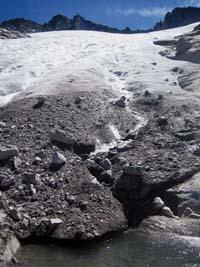
Climate change
Since glaciers began to disappear, the loss has not occurred at a constant speed. The rate of loss is intimately linked to climatic fluctuations in the area: in times of low rainfall and high temperatures, glaciers have receded rapidly, while in times of low temperature and high precipitation glaciers have remained without mass loss.
In Maladas, for example, Chueca and his team have studied the evolution of the glacier since the end of the Little Ice Age and have related this evolution to climate factors. This study explains that since the 1820s the glacier has receded in length and thickness. At first, especially between 1857 and 1901, the loss was very rapid. At that time, rainfall was low, both in winter and throughout the year, and temperatures were higher than normal. This meant a great loss of glacier mass.
In the coming decades, glaciers continued to decline, but at a lower speed. Between 1958 and 1981 the glacier stabilized remarkably. The 1960s was especially dry, but the 1970s, especially in the second half, was very different. Summer temperatures were half a degree lower than average temperatures in this period, while winter precipitation exceeded 13% the average.
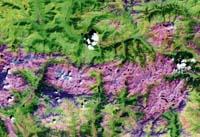
However, in the Maladeta massif, in addition to the eastern and western glaciers of the Maladas, there are more glaciers. Precisely, the glacier complex of the Maladas is the largest and best preserved on the Spanish side. It is located in the valley of Benasque and its main summits exceed 3,000 meters: Aneto, with 3.404 meters, is the highest in the Pyrenees; Pico Maldito, with 3.350 meters; Maladeta, 3.308; Alba, 3.118...
The massif extends from northwest to southeast, so most of the remaining glaciers currently face northeast. Only the one in Coronas is southwest, but it has already become a kind of fridge and is difficult to endure. The rest of the glaciers of the massif (east and west of Maladeta, Aneto, Barrancs and Tempestades) have also lost great surface and thickness in the last two decades. According to Chueca's latest measurements, almost half of the area of the Maladas glacial complex was lost until 2006 (from 240.62 hectares to 125,74).
After the glaciers of Maladeta, the largest are those of Monte Perdido, but there they have quickly receded. In 2006, the entire glacier of Monte Perdido occupied 50.17 hectares, representing 44.3% of its surface in 1981. The other glaciers remaining in the Spanish part have lost even more: The glaciers of the Posets massif occupy 18,51 hectares, a little less than a third of its surface in 1981, while those of Infiernos occupy only 6,96 hectares, approximately a quarter of what they had in 1981.
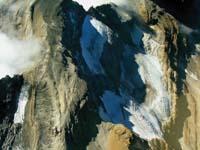
Phenomenon without borders
Of course, the climate and mountains do not know the administrative-political borders imposed by humans and the glaciers of the French Pyrenees are evolving in a similar way to the Aragonese glaciers. For example, in summer 2006, researchers from the universities of Bordeaux III and Paris IV conducted a comprehensive study on the glacier of Ossoue. This glacier is located under the highest peak on the French side of the Pyrenees (Vignemale, 3,298 meters) and currently occupies about 50 hectares, about half of its surface at the end of the Little Ice Age.
The researchers analyzed the thickness of the glacier by radar, point by point, comparing the data with the previous records. Among other things, they observed that in recent years (since 2001) it is melting much faster and faster and faster than before. In addition, in general, some years of low snow are occurring, and in times of intense snow (winters 2002-2003 and 2003-2004), it has not been enough to match the melt in summer. An average annual loss of 1.5 meters in thickness is estimated.

Because of man?
For many experts, humans are responsible for an increasingly rapid loss of glaciers. In fact, emissions of gases into the atmosphere from human activities produce the greenhouse effect, which is causing climate change that goes beyond what would actually occur. This is believed to have made temperatures in the Pyrenees higher than normal and rainfall lower. This causes glaciers to lose faster and faster, but it is difficult to know how much human activity is affecting.

However, some have no doubt. Greenpeace Spain published a report on glaciers in 2004. "The disappearance of the glaciers of the Spanish Pyrenees. Under the title "Climate change in sight", the authors are Enrique Serrano and Eduardo Martínez de Pisón, professors of Physical Geography. With the data of the researchers, and based on the climate projections of the future of the international association in charge of climate change (IPCC), it is expected that in the mid-21st century the current glaciers will disappear totally or partially.
These pessimistic predictions have occurred elsewhere in the world, as glaciers are receding all over the world. For example, according to the European Environment Agency, by 2050 three-quarters of the glaciers of the Swiss Alps will be missing. And many scientists directly relate loss to climate change that is causing human activity. If the current trend does not change, the tops will go from white to black.
